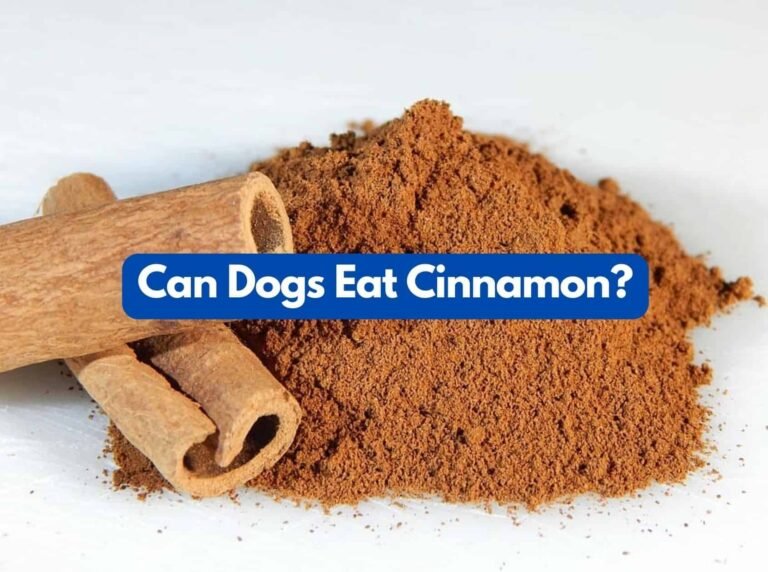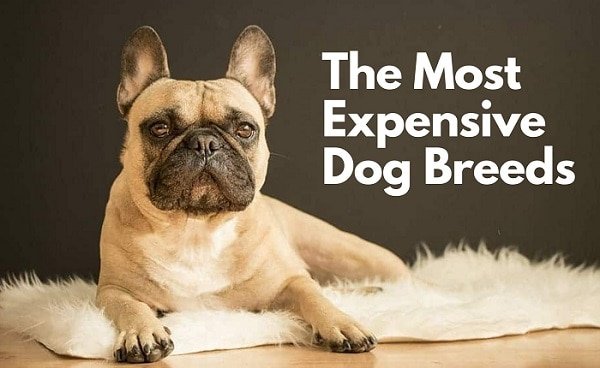Can Dogs Eat Cheerios? Is It Safe For Dogs?

If Cheerios is your cereal you’ve probably asked yourself can dogs eat Cheerios? Make sure you read this article from start to finish.
Imagine you and your pup staring at a bowl of Cheerios and you wondering if you can share with your furry friend, right?
Well, the answer is mixed, in this article I will walk you through everything you need to know about dogs and Cheerios.
Not only that, but we have also answered some frequently asked questions related to the question “can dogs eat Cheerios?”
Without much ado, let’s get into the details.
You may also like to see this article: Can Dogs Eat Waffles? How Safe Is It For Dogs?
Things To Know About Cheerios
Cheerios is one of the most popular American brands of oat cereal in the world made by General Mills.
Initially, it was known as Cheerioats and it was introduced in 1941.
The meal has a wide range of vitamins and minerals and is minimal in calories, sugar, and saturated fat.
Also, it’s high in fiber and the manufacturers advertise it as being able to decrease cholesterol and support heart health in dogs.
Aside from the original recipe, Cheerios has other flavors such as banana, multigrain, and gluten-free, with the honey nut currently the number one.
With these tasty varieties available, you might be tempted to treat your pup to a bowl of Cheerios.
But then, are Cheerios ok for your dogs to snack on?
Continue reading to find out if you can feed your dogs Cheerios.
Read this article next: Can Dogs Eat Pepperoni? How Safe Is It For Dogs?

Can Dogs Eat Cheerios?
Yes, dogs can eat Cheerios as they are not harmful but your pup has to eat them in moderation.
Cheerios don’t offer much to your dog in terms of nutrition because it is seen as an empty-calorie cereal.
But you can use Cheerios as a special treat for your dogs but it should not always be.
Even if your dog craves Cheerios, and you would want to give them sometimes, as a treat the amount should be limited and shouldn’t exceed a quarter cup once a week.
That said, there are possibilities that your dog might not like the meal when you try to give it to them because dogs don’t generally like sugary foods.
So, if you would still want to give your pup a Cheerios treat some varieties do not contain high sugar levels.
Read on to learn about some of the flavored varieties of Cheerios that you can feed your dog.
Check this out How To Treat A Dog Stye At Home Very Easily.
Which Varieties Of Cheerios Can Dogs Eat?
Below are some flavors that are considered ok to give your pup to snack on but remember not always.
Also, we are going to consider other types of Cheerios that are not good for your pup to snack on.
1. Multigrain Cheerios:
Yes, dogs can eat Multigrain Cheerios but it should be in moderation and not every day.
Although dogs don’t thrive on higher amounts of grains because their bodies need a diet high in animal proteins and vitamins from vegetables.
However, Multigrain Cheerios is safe to give your dog once in a while but your pup won’t benefit much from it.
2. Rice Cheerios:
Another ingredient that serves as a non-nutritive filler for dogs is rice. They receive no profit from it, but it also does them no harm.
However, it’s fine for dogs to eat rice Cheerios, but don’t give it to them frequently.
3. Gluten-Free Cheerios:
Yes, dogs can eat Cheerios without gluten. Keep giving your dog the same amounts of these since they are produced with the same ingredients as the original Cheerios.
4. Regular Cheerios:
Eating regular Cheerios is safe for your pup to eat because they contain less sugar and other additives,
Plain Cheerios are the safest variety to feed your dog. If your pet has a delicate stomach and needs a moderate training reward, this is the cheerios to share with them.
Now we have seen some Cheerios flavors that your pup might snack on moderately. Let’s learn about the ones that are not good.
Also, read about the 5 Best Pet Insurance Companies For Dogs and Cats in 2023.

Which Varieties Of Cheerios Can Dogs Not Eat?
1. Honey Nut Cheerios:
This particular Cheerios flavor has a lot of sugar in it. Although it’s not the worst flavor your dog can take, your pup shouldn’t snack on this.
2. High-Protein Cheerios:
This cereal is made with Almonds in it, and as a result, might cause vomiting and diarrhea to your pup due to their stomach’s inability to properly digest them.
So, due to the above reasons, protein Cheerios are not good for your pup to snack on.
3. Frosted Cheerios:
Your dog will not be able to snack on this particular flavor since they shouldn’t be consuming too much sugar intake.
Although your pup can take Frosted Cheerios without getting sick, However, your dog shouldn’t eat them because of the high sugar content.
Note that when a pup’s diet is high in sugar, it can cause diabetes, obesity, and cardiac issues.
Now we have seen the varieties of Cheerios your pup can take and not take, let’s learn about the quantity they can snack on.
Also read, Can Dogs Eat Granola? How Safe Is It For Dogs?
What Quantity Of Cheerios Can Dogs Eat?
To be on the safe side it’s best not to give your pup Cheerios every day instead let it be given to them occasionally as a special treat.
So, you can feed your pup Cheerios in small amounts such as ¼ cup or less only as treats and never as a full meal.
But if your dog has never had Cheerios before, watch out for signs like stomach upset, and when it gets too much call your
veterinarian.
However, in some cases, Cheerios can be a nice treat for your pup but it does not offer any nutritional value to your dog.
Continue reading to find out why your pup cannot eat Cheerios as a main dish regularly.
If you love traveling with your pet then you may like to also read about Spirit Airlines Pet Policy For Travelling With Dogs and Cats
What Makes Cheerios Bad For Your Dogs?
The major reason why Cheerios are bad for your dog is that it is made with sugar and salt.
Cheerios have extra sugar and salt, neither of which your dog needs in his diet, according to a doctor “Added sugar can cause obesity, dental damage, and even diabetes.”
Your dog may reject its dog food, which has all of the vital nutrients it needs to flourish if it consumes too many sweet foods.
That said, let’s find out some other reasons why your pup shouldn’t snack on this meal regularly.
1. Cheerios Are High-Calorie and High-Carbohydrate Snacks for Dogs:
We have seen that Cheerios is not that bad for your pup to snack on but it’s not the healthiest.
The high-calorie and high-carb in them make it an empty-calorie snack or treat for your dogs because too much calorie and carb intake can lead to obesity over time.
You mustn’t feed your pooch more than 10% when it comes to treats and snacks
However, most dogs in general require 25 to 30 calories per pound each day to maintain their weight.
For example, a small 10-pound Chihuahua needs 250 calories per day, which is 10% or 25 calories from treats and 90% or 225 calories from a well-balanced main diet.
While a medium-sized 70-pound Labrador needs 1,750 calories per day which is 10% or 175 calories from treats and 90% or 1,575 calories from a well-balanced main diet.
So, with this, you can see that the smaller pup is more affected by the high calories than a medium-sized pooch.
Check out this article about Seizure Alert Service Dogs (Top 10 Breeds With Pictures)
2. Too Much Sodium In Cheerios Can Cause Salt Poisoning In Dogs:
The salt content of 1 cup of Cheerios is 126.7 mg. For dogs, that is a huge amount of salt.
Keep in mind that for every 100 grams of food, dogs only require 0.25 to 1.5 grams of salt.
When your pup consumes too much salt it puts them at risk of salt poisoning.
Below are some signs of salt poisoning:
- Diarrhea.
- Loss of appetite.
- Lack of coordination.
- Muscle weakness and tremors.
- Convulsions.
- Lethargy
- Urinating more frequently.
- Vomiting.
- Extreme thirst leads to drinking a lot of water.
3. High Fiber in Cheerios Can Cause Stomach Upset In Dogs:
Having fiber in your pooch’s diet is necessary as it helps them to maintain a healthy digestive tract.
Also, when your pup has diarrhea eating a meal with fiber can help.
However, when the consumption of fiber becomes too much, it has its effect which can lead to their bodies having a difficult time absorbing vital minerals thereby causing fiber imbalance.
As a result, too much fiber in their bodies can lead to the following symptoms:
- Loose and watery diarrhea.
- Going to the bathroom more frequently.
- Accidentally defecating inside the house.
So, with all these, you should know that feeding your pup with Cheerios should be in moderation.
Above all, it’s important to take note of the nutritional value of any dog treat before feeding them to our furry friend.
Moving on, let’s examine the type of cereal your dog can eat that will not cause any form of discomfort to them.
Read about these 12 Best Dog Breeds from Africa (With Pictures).
So, What Type of Cereal Can Dogs Eat?
Dogs can consume cereals that are low in sugar and high in grains like wheat, oats, and bran. However, make sure to first determine whether your pup is allergic to wheat.
Similar to Cheerios, canines should never be fed cereal as a whole meal; rather, it should only be given to them as training treats or as a snack.
Even while cereals may be advertised as being low in sugar and devoid of preservatives, every brand always contains some of both, which can accumulate over time and lead to health issues.
However, Bran flakes, cream of wheat, and oat bran are the greatest foods to give your dog because they are all generally healthful and low in sugar.
Do not give your pup any chocolate-flavored or high-sugar treats like cocoa puffs or frosted flakes since they are extremely unhealthy, even by human standards.
Chocolate must be avoided since it is harmful to dogs and will make your pet unwell.
For the same reason, several Cheerio tastes including fruity, frosted, and chocolate should also be avoided.
Finally given that many dogs are lactose sensitive, you should only offer your pooch cereal dry and never with milk. Milk could give them illness.
Conclusion
We always want to make sure that our dogs are eating nutritious meals full of protein and nutrient-rich foods, so Cheerios are a great choice as an “occasional treat.”
Don’t offer your dog too much of this cereal even if it won’t harm them. Always check the contents list on cereals and avoid dangerous additives.
Please consult your veterinarian if you have any queries regarding what foods are safe for dogs to consume.
If we were able to relieve your concerns about giving your pet Cheerios and provide you with some suggestions for how to mix up your dog treats, then make sure to share this with your friends and family.
Frequently Asked Questions
Can Dogs With Cancer Eat Cheerios?
This is a pretty specific question regarding the health of a dog. If your dog has cancer, kindly ask your vet if they think they can give them Cheerios.
Can Dogs With Kidney Disease Eat Cheerios?
If you have any inquiries about feeding Cheerios to your canine with kidney illness, it’s best to contact your veterinarian. All canines are unique, thus a professional’s insight is necessary in this case.
Can Diabetic Dogs Eat Cheerios?
When it comes to your canine health, speak to your veterinarian if you have any concerns about it.
Can Dogs Eat Flavored Cheerios?
Yes, they can snack on different flavors but it must always be in moderation and not as a main dish you can scroll up to get more info on this.
Can Dogs Have Cheerios As Training Treats
Compared to their usual diet, many dogs prefer to consume dog treats.
Cheerios are very basic in flavor, so giving them to your canine as treats can let him enjoy the cereal as a treat while also keeping him interested in his regular meals.
During training, give your pooch one cheerios at a time, but if you find your pup gaining weight, you may be giving him too many.
Are Cheerios Bad for Dogs?
Cheerios are quite low in protein, which is a key nutrient for dogs, and do not include the vitamins and minerals that your pooch needs to be healthy.
Are Honey Nut Cheerios Ok For dogs?
As far as ingredients go, Honey Nut Cheerios are safe for dogs because they don’t include any substances that may be harmful or dangerous to canines.
However, because of their high content of sugar, salt, calories, and carbohydrates, Honey Nut Cheerios are not suitable for dogs from the standpoint of their nutritional profile.
Can Dogs Eat Pumpkin Spice Cheerios?
No, canines shouldn’t consume Pumpkin Spice Cheerios because it has two major ingredients that are not good for dogs which are nutmeg spice and cloves.
As a result, this makes the pumpkin spice in Cheerios not healthy or beneficial for them, but real pumpkin is.
Can Dogs Eat Cheerios with Milk?
Dogs can eat Cheerios, but they shouldn’t be given milk with them. Even though they could experience some digestive issues, they won’t likely be harmed if they sip some from your bowl, although I would still try to avoid this.
Only a few tablespoons of milk should be given to your dog as a treat on occasion, according to the American Kennel Club.
It’s also enough to make their cereal mushy, which can lead to digestive issues like diarrhea and stomach upset.
Can Dogs With Pancreatitis Eat Cheerios?
Unfortunately, I couldn’t discover any information about Cheerios and canine pancreatitis.
I would steer clear of them to be cautious, or I would ask my veterinarian for advice if my pup had pancreatitis.
Depending on how frequently your dog has experienced pancreatitis, how long it has been since their most recent flare-up, and whether they have been diagnosed with acute or chronic pancreatitis, their recommendations may differ.
Unseasoned cooked chicken, a little amount of plain chicken broth, plain green beans, or even sticking to a prescription diet are some safer alternatives.
Giving Cheerios with milk to a dog that has pancreatitis is not a good idea because milk can worsen the condition and cause additional digestive issues.
Reference
- Dogleaahpro.com – Can Dogs Eat Cheerios?
- A-z-animals.com – Yes Dogs Can Eat Cheerios, But Here’s Why They Shouldn’t





